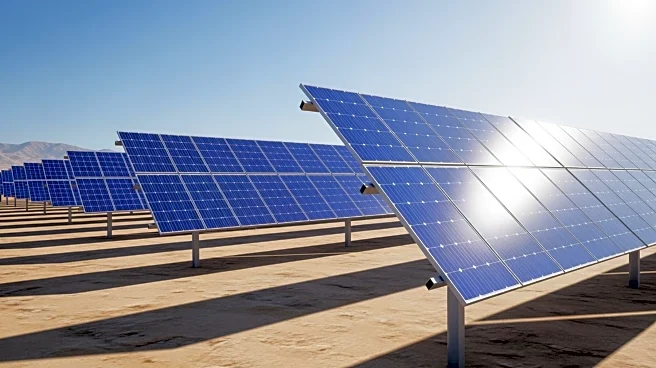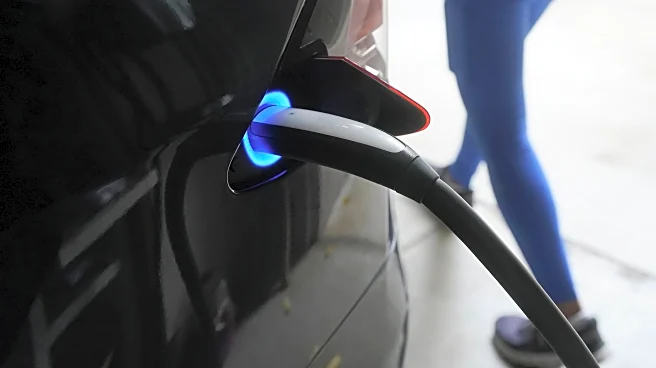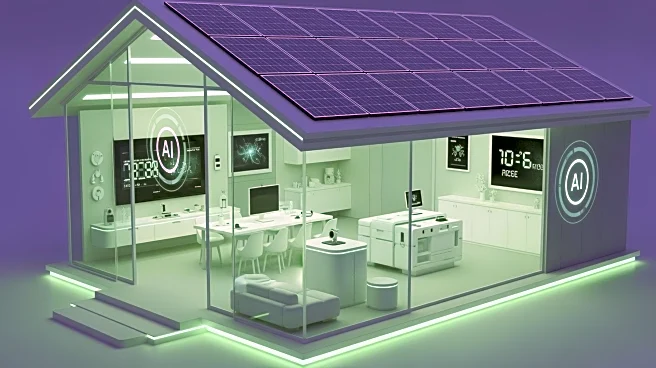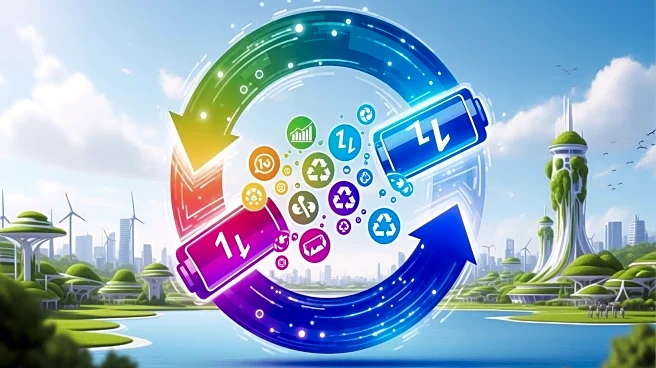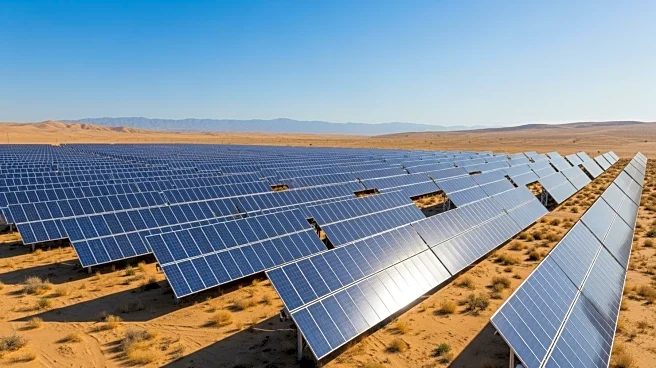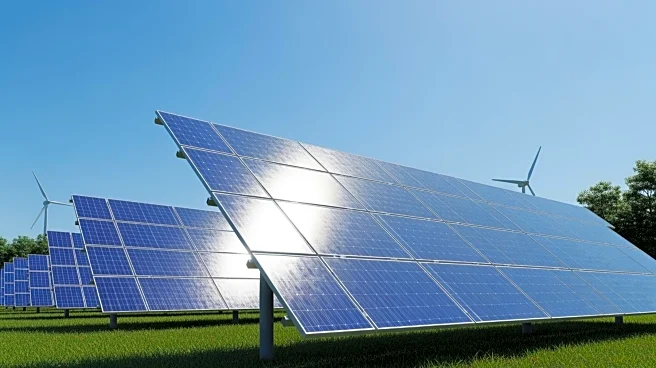What's Happening?
Solar energy is experiencing a significant surge in deployment, with its global generation capacity doubling between 2022 and 2024, now supplying 7% of the world's electricity. In the first half of 2025,
solar and wind power surpassed coal, marking a historic milestone in renewable energy's dominance. Solar energy's affordability is a key driver, with installation costs dropping by 90% over the past 15 years. Silicon photovoltaic panels, which convert about 20% of sunlight into electricity, are the most common, but advancements in tandem solar cells promise higher efficiency. Despite challenges like efficiency limits and storage issues, solar power is increasingly seen as a viable solution for global energy needs.
Why It's Important?
The rapid growth of solar energy is crucial for transitioning to a sustainable energy future. As the world's lowest-cost electricity source, solar power offers economic advantages over traditional energy sources, potentially reducing reliance on fossil fuels. This shift is essential for meeting the growing power demands of AI data centers and addressing climate change. However, political and logistical challenges, such as grid infrastructure and policy consistency, could impact the pace of solar adoption. Overcoming these obstacles is vital for achieving global electrification and reducing carbon emissions, positioning solar energy as a cornerstone of future energy systems.
What's Next?
The future of solar energy involves addressing efficiency and storage challenges. Tandem solar cells, which offer higher efficiency, are entering commercial production and could dominate the market within a decade. Innovations in energy storage, such as lithium-ion batteries and interseasonal solutions like pumped hydro, are crucial for managing solar power's variability. Political and regulatory support will be necessary to facilitate solar projects and integrate them into existing grid systems. As countries work to electrify more sectors, solar energy is expected to play a pivotal role in meeting global energy demands and achieving sustainability goals.
Beyond the Headlines
The transition to solar energy involves ethical and cultural dimensions, including land use trade-offs and the impact on traditional energy industries. The shift requires balancing environmental benefits with economic interests, as solar power competes with agriculture and other land uses. Additionally, the political landscape, influenced by climate-skeptic administrations, poses challenges to solar adoption. Despite these hurdles, the economic advantages of solar energy make its widespread adoption likely, potentially reshaping global energy markets and reducing geopolitical tensions related to fossil fuel dependency.
